Note: There is now a newer Novel Coronavirus (COVID-19) Situation Report 95.
WHO Novel Coronavirus (COVID-19) Situation Report 94
- The Global Outbreak Alert and Response Network (GOARN) has launched a GOARN COVID-19 Knowledge hub. The hub is designed as a central repository of quality public health information, guidance, tools, and webinars which can be accessed freely at any point.
- WHO Director-General Dr. Tedros, in his regular media briefing yesterday, cautioned that “we have a long way to go. This virus will be with us for a long time.” He added that “the world cannot go back to the way things were. There must be a “new normal” – a world that is healthier, safer, and better prepared.”
- WHO has published guidance ‘Addressing Human Rights as Key to the COVID-19 Response.’ The guidance document highlights the importance of integrating a human rights-based approach into the COVID-19 response and highlights key considerations in relation to addressing stigma and discrimination, prevention of violence against women, support for vulnerable populations, quarantine and restrictive measures, and shortages of supplies and equipment.
- All available evidence for COVID-19 suggests that SARS-CoV-2 has a zoonotic source. Many researchers have been able to look at the genomic features of SARS-CoV-2 and have found that evidence does not support that SARS-CoV-2 is a laboratory construct. A constructed virus would show a mix of known elements within genomic sequences –this is not the case. For more details, please see ‘subject in focus.’
Risk Assessment
Global Level: Very High
Coronavirus Situation in Numbers
Globally
- 2,544,792 confirmed cases (73,657 new)
- 175,694 deaths (6,689 new)
European Region
- 1,251,458 confirmed cases (31,972 new)
- 113,336 deaths (3,384 new)
Regions of the Americas
- 957,402 confirmed cases (32,111 new)
- 47,812 deaths (3,038 new)
Eastern Mediterranean Region
- 144,450 confirmed cases (5,101 new)
- 6,469 deaths (143 new)
Western Pacific Region
- 137,902 confirmed cases (1,632 new)
- 5,818 deaths (25 new)
South-East Asia
- 36,039 confirmed cases (2,127 new)
- 1,498 deaths (71 new)
African Region
- 16,829 confirmed cases (714 new)
- 748 deaths (28 new)
SUBJECT IN FOCUS: Origin of the severe acute respiratory syndrome coronavirus-2 (SARS-CoV-2), the virus causing COVID-19
The first human cases of COVID-19, the disease caused by the novel coronavirus causing COVID-19, subsequently named SARS-CoV-2were first reported by officials in Wuhan City, China, in December 2019. Retrospective investigations by Chinese authorities have identified human cases with onset of symptoms in early December 2019. While some of the earliest known cases had a link to a wholesale food market in Wuhan, some did not. Many of the initial patients were either stall owners, market employees, or regular visitors to this market. Environmental samples taken from this market in December 2019 tested positive for SARS-CoV-2, further suggesting that the market in Wuhan City was the source of this outbreak or played a role in the initial amplification of the outbreak. The market was closed on January 1, 2020.
SARS-CoV-2 was identified in early Januaryand its genetic sequence shared publicly on 11-12 January. The full genetic sequence of SARS-CoV-2 from the early human cases and the sequences of many other virus isolated from human cases from China and all over the world since then show that SARS-CoV-2 has an ecological origin in bat populations. All available evidence to date suggests that the virus has a natural animal origin and is not a manipulated or constructed virus. Many researchers have been able to look at the genomic features of SARS-CoV-2 and have found that evidence does not support that SARS-CoV-2 is a laboratory construct. If it were a constructed virus, its genomic sequence would show a mix of known elements. This is not the case.
Another coronavirus, SARS-CoV-1, the cause of the Severe Acute Respiratory Syndrome (SARS) outbreak in 2003, was also closely related to other coronaviruses isolated from bats. These close genetic relations of SARS-CoV-1, SARS-CoV-2 and other coronaviruses, suggest that they all have their ecological origin in bat populations. Many of these coronaviruses can also infect several animal species. For example, SARS-CoV-1 infected civet cats and then humans, while the virus causing the Middle East Respiratory Syndrome (MERS-CoV) is found in dromedary camels, and has continued to infect humans since 2012.
All available evidence for COVID-19 suggests that SARS-CoV-2 has a zoonotic source. Since there is usually limited close contact between humans and bats, it is more likely that transmission of the virus to humans happened through another animal species, one that is more likely to be handled by humans. This intermediate animal host or zoonotic source could be a domestic animal, a wild animal, or a domesticated wild animal and, as of yet, has not been identified.
All the published genetic sequences of SARS-CoV-2 isolated from human cases are very similar. This suggests that the start of the outbreak resulted from a single point introduction in the human population around the time that the virus was first reported in humans in Wuhan, China in December 2019.
A number of investigations to better understand the source of the outbreak in China are currently underway or planned, including investigations of human cases with symptom onset in and around Wuhan in late 2019, environmental sampling from markets and farms in areas where the first human cases were identified, and detailed records on the source and type of wildlife species and farmed animals sold in these markets.
Results from these studies are essential to preventing further zoonotic introductions of SARS-CoV-2 into the human population. WHO continues to collaborate with animal health and human health experts, Member States, and other partners to identify gaps and research priorities for the control of COVID-19, including the eventual identification of the source of the virus in China.
Countries, territories or areas with reported laboratory-confirmed COVID-19 cases and deaths, April 23, 2020
| Country/Territory/Area | Confirmed Cases |
|---|---|
| United States of America | 800926 |
| Spain | 208389 |
| Italy | 187327 |
| Germany | 148046 |
| United Kingdom | 133499 |
| France | 117961 |
| Turkey | 98674 |
| Iran | 85996 |
| China | 84302 |
| Russian Federation | 62773 |
| Brazil | 43079 |
| Belgium | 41889 |
| Canada | 38923 |
| Netherlands | 34842 |
| Switzerland | 28186 |
| Portugal | 21982 |
| India | 21393 |
| Peru | 17837 |
| Ireland | 16671 |
| Sweden | 16004 |
| Austria | 14924 |
| Israel | 14498 |
| Saudi Arabia | 12772 |
| Japan | 11919 |
| Chile | 11296 |
| Ecuador | 10850 |
| Republic of Korea | 10702 |
| Pakistan | 10513 |
| Poland | 10169 |
| Singapore | 10141 |
| Romania | 9710 |
| Mexico | 9501 |
| United Arab Emirates | 8238 |
| Denmark | 7912 |
| Indonesia | 7418 |
| Belarus | 7281 |
| Norway | 7250 |
| Ukraine | 7170 |
| Qatar | 7141 |
| Czechia | 7136 |
| Serbia | 7114 |
| Philippines | 6710 |
| Australia | 6654 |
| Malaysia | 5532 |
| Dominican Republic | 5300 |
| Panama | 4821 |
| Colombia | 4149 |
| Finland | 4129 |
| Bangladesh | 3772 |
| Egypt | 3659 |
| Luxembourg | 3654 |
| South Africa | 3635 |
| Morocco | 3446 |
| Argentina | 3197 |
| Algeria | 2910 |
| Thailand | 2839 |
| Republic of Moldova | 2778 |
| Greece | 2408 |
| Hungary | 2284 |
| Kuwait | 2248 |
| Bahrain | 2027 |
| Kazakhstan | 2025 |
| Croatia | 1950 |
| Iceland | 1785 |
| Oman | 1716 |
| Uzbekistan | 1716 |
| Iraq | 1631 |
| Estonia | 1559 |
| Azerbaijan | 1518 |
| Armenia | 1473 |
| Lithuania | 1398 |
| Bosnia and Herzegovina | 1367 |
| Slovenia | 1353 |
| Puerto Rico | 1298 |
| North Macedonia | 1259 |
| Slovakia | 1244 |
| Cuba | 1189 |
| Afghanistan | 1176 |
| Cameroon | 1163 |
| Ghana | 1154 |
| New Zealand | 1113 |
| Bulgaria | 1024 |
| Djibouti | 974 |
| Côte d’Ivoire | 952 |
| Tunisia | 909 |
| Cyprus | 790 |
| Guinea | 761 |
| Latvia | 761 |
| Andorra | 724 |
| International (Diamond Princess Cruise Ship) | 712 |
| Lebanon | 682 |
| Costa Rica | 669 |
| Niger | 662 |
| Albania | 634 |
| Kyrgyzstan | 631 |
| Kosovo | 630 |
| Bolivia | 609 |
| Burkina Faso | 600 |
| Uruguay | 543 |
| Nigeria | 541 |
| Honduras | 510 |
| San Marino | 488 |
| Malta | 444 |
| Senegal | 442 |
| Jordan | 435 |
| Georgia | 420 |
| Réunion | 410 |
| Democratic Republic of the Congo | 359 |
| Palestinian Territory | 336 |
| Sri Lanka | 330 |
| Mauritius | 329 |
| Mayotte | 326 |
| Guatemala | 316 |
| Montenegro | 314 |
| Isle of Man | 307 |
| Kenya | 303 |
| Mali | 293 |
| Venezuela | 288 |
| Somalia | 286 |
| United Republic of Tanzania | 285 |
| Vietnam | 268 |
| Jersey | 255 |
| Guernsey | 241 |
| El Salvador | 237 |
| Jamaica | 233 |
| Paraguay | 213 |
| Congo | 186 |
| Faroe Islands | 185 |
| Gabon | 166 |
| Martinique | 164 |
| Sudan | 162 |
| Rwanda | 153 |
| Guadeloupe | 148 |
| Brunei Darussalam | 138 |
| Guam | 136 |
| Gibraltar | 133 |
| Myanmar | 127 |
| Cambodia | 122 |
| Madagascar | 121 |
| Ethiopia | 116 |
| Trinidad and Tobago | 115 |
| Liberia | 101 |
| Aruba | 100 |
| Bermuda | 98 |
| Monaco | 98 |
| French Guiana | 97 |
| Togo | 88 |
| Maldives | 85 |
| Equatorial Guinea | 84 |
| Liechtenstein | 82 |
| Barbados | 75 |
| Zambia | 74 |
| Sint Maarten | 71 |
| Cabo Verde | 67 |
| Guyana | 67 |
| Cayman Islands | 66 |
| Bahamas | 65 |
| Sierra Leone | 61 |
| Uganda | 61 |
| Libya | 60 |
| Haiti | 58 |
| French Polynesia | 57 |
| Benin | 54 |
| United States Virgin Islands | 54 |
| Guinea-Bissau | 50 |
| Nepal | 45 |
| Syrian Arab Republic | 42 |
| Mozambique | 41 |
| Eritrea | 39 |
| Saint Martin | 38 |
| Mongolia | 35 |
| Chad | 34 |
| Eswatini | 31 |
| Zimbabwe | 28 |
| Angola | 24 |
| Antigua and Barbuda | 24 |
| Malawi | 23 |
| Timor-Leste | 23 |
| Botswana | 22 |
| Lao People’s Democratic Republic | 19 |
| Belize | 18 |
| Fiji | 18 |
| New Caledonia | 18 |
| Dominica | 16 |
| Namibia | 16 |
| Saint Kitts and Nevis | 15 |
| Saint Lucia | 15 |
| Central African Republic | 14 |
| Curaçao | 14 |
| Grenada | 14 |
| Northern Mariana Islands | 14 |
| Saint Vincent and the Grenadines | 13 |
| Falkland Islands (Malvinas) | 12 |
| Burundi | 11 |
| Greenland | 11 |
| Montserrat | 11 |
| Seychelles | 11 |
| Turks and Caicos | 11 |
| Gambia | 10 |
| Nicaragua | 10 |
| Suriname | 10 |
| Holy See | 9 |
| Papua New Guinea | 8 |
| Bhutan | 7 |
| Mauritania | 7 |
| São Tomé and Príncipe | 7 |
| Saint Barthelemy | 6 |
| Bonaire, Sint Eustatius and Saba | 5 |
| British Virgin Islands | 4 |
| South Sudan | 4 |
| Anguilla | 3 |
| Saint Pierre and Miquelon | 1 |
| Yemen | 1 |
| Total | 2544792 |
Recommendations and Advice for the Public
If you are not in an area where COVID-19 is spreading or have not traveled from an area where COVID-19 is spreading or have not been in contact with an infected patient, your risk of infection is low. It is understandable that you may feel anxious about the outbreak. Get the facts from reliable sources to help you accurately determine your risks so that you can take reasonable precautions (see Frequently Asked Questions). Seek guidance from WHO, your healthcare provider, your national public health authority or your employer for accurate information on COVID-19 and whether COVID-19 is circulating where you live. It is important to be informed of the situation and take appropriate measures to protect yourself and your family (see Protection measures for everyone).
If you are in an area where there are cases of COVID-19 you need to take the risk of infection seriously. Follow the advice of WHO and guidance issued by national and local health authorities. For most people, COVID-19 infection will cause mild illness however, it can make some people very ill and, in some people, it can be fatal. Older people, and those with pre-existing medical conditions (such as cardiovascular disease, chronic respiratory disease or diabetes) are at risk for severe disease (See Protection measures for persons who are in or have recently visited (past 14 days) areas where COVID-19 is spreading).

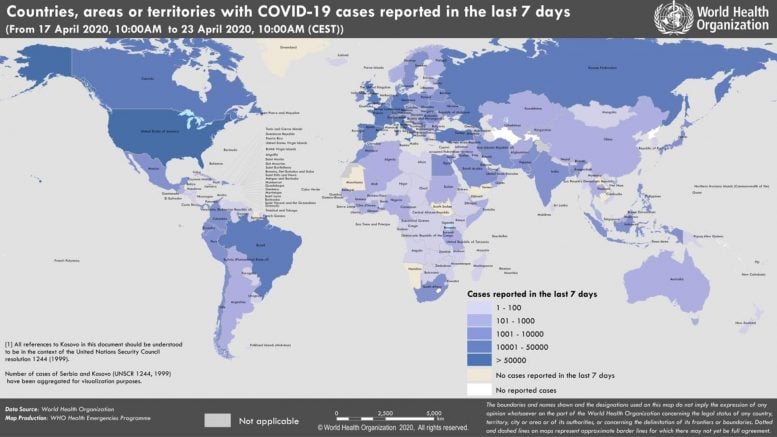
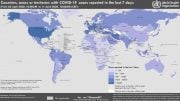
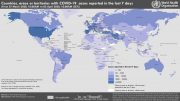
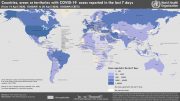
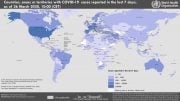
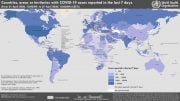
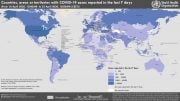
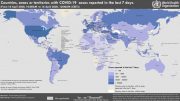
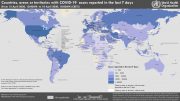
My very big thanks to USA & EUROPEAN Nations and other countries whom have done a comely exercise in the fight against the ugly virus and also to have provided a benevolence aid financially and materially to citizens and non citizens.
My very big thanks to USA & EUROPEAN Nations and other countries whom have done a comely exercise in the fight against the ugly virus and also to have provided a benevolence aid financially and materially to citizens and non citizens.Thanks.From, Territorial Throne Presidential Territory,TCICGI,United States Of South South Federation